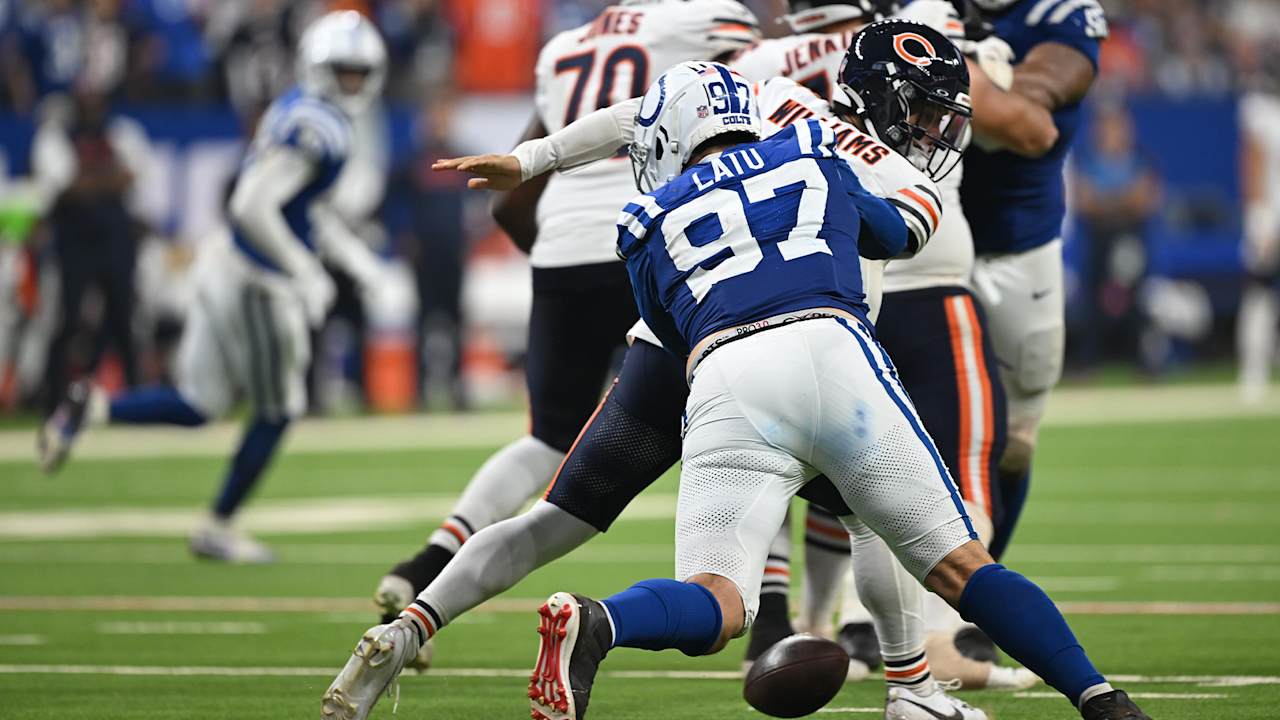A sack is a play in which the defense tackles the quarterback beyond the line of scrimmage, resulting in a loss of yards and forcing the offense to turn the ball over. It is an important part of a team’s pass defense and may stymie the offense’s ability to move the ball downfield. Sacks may also lead to turnovers if the defense recovers the ball after the sack. They are a vital aspect of the game and may quickly affect the flow of a game.
As a former football player, I firmly believe that a deeper understanding of concepts like a sack, what is DB in football, what Moss means in football, and Can a skinny person play football can strengthen and change your entire game in no time. So, let us now take the knowledge lightly and today let me help you with some rules!
The Rules Behind Sacking The Quarterback
There Are Several Rules Related To Sacking The Quarterback:
- The defense is only allowed to sack the quarterback if they are lined up on the same side of the ball as the quarterback. If the defense crosses over to the opposite side of the ball, it is considered illegal, and the offense is awarded a penalty.
- The defense is not allowed to tackle the quarterback below the knees or above the shoulders. Doing so could result in a penalty for roughing the passer.
- The defense is not allowed to grab the quarterback’s facemask or helmet to tackle him. This is also considered roughing the passer and results in a penalty.
- The defense is not allowed to tackle the quarterback after he has thrown the ball. If the quarterback releases the ball, the defense must stop their pursuit and allow the quarterback to move around in the pocket or run.
- The defense is not allowed to hit the quarterback with their helmets or use their helmet to tackle the quarterback. This is considered a personal foul and results in a penalty.
Overall, the rules related to sacking the quarterback are in place to protect the quarterback and ensure that the game is played fairly and safely.
History Of Sacking In Football
Sacking or firing a head coach in football (also known as soccer in some countries) is a common practice when a team is underperforming or not meeting the expectations of the team’s management or ownership. This can happen at the professional and amateur levels of the sport.
The first recorded instance of a head coach being sacked in football occurred in England in the 1930s. Since then, the practice has become more common as the sport has grown in popularity and the pressure to win has increased.
In the modern game, football clubs will often sack a head coach if the team is not achieving the desired results or if there is a loss of faith in the coach’s ability to lead the team to success. This can be costly for a club, as they may have to compensate the coach for the remainder of their contract.
The frequency of sacking head coaches varies between football leagues and clubs. In some leagues and clubs, coaches are given more time to turn a team’s fortunes around, while in others, a string of poor results can lead to a quick dismissal.
Who Has The Most Sacks In NFL History?
Hall-of-Famers on the defensive line could have the most career sacks or rank high on the all-time list. Bruce Smith has the most career sacks in the NFL, having played for the Buffalo Bills and the Washington Redskins. Bruce Smith is followed by Kevin Greene, Julius Peppers, Reggie White, and Chris Doleman in the top five.
NFL All-Time Sack Leaders
Although sacks occur every week in the NFL, several players are among the best sack artists. Although many defensive tackles and outside linebackers were among them, most played defensive end. Let’s look at the top ten all-time NFL sack leaders, as rated by ESPN:
- Bruce Smith: 200 sacks
- Richard Dent / John Randle: 137.5 sacks
- Reggie White:198 sacks
- Terrell Suggs: 139 sacks
- Kevin Greene: 160 sacks
- Jason Taylor: 139.5 sacks
- Julius Peppers: 159.5 sacks
- Chris Doleman: 150.5 sacks
- Michael Strahan:141.5 sacks
- Demarcus Ware: 138.5 sacks
While all of these players are defensive linemen or linebackers, other defensive positions get sacks; they don’t happen as often. For example, Jamal Adams (strong safety) ranks 52nd in the NFL with 6.5 sacks this season. Logan Ryan (cornerback) finished the season 86th in the league with 4.5 sacks.
Only one of the players above is active: Terrell Suggs, a free agent looking for a team. Only Von Miller (106 sacks) and Cameron Wake have more than 100 sacks as active players (100.5 sacks). As linebackers get more playing time on the defensive line, more hybrid sack artists develop in the NFL, such as Wake and Miller.
How Much Is A Sack Worth In The NFL?
The value of a sack in the NFL can vary, depending on the specific circumstances of the play and the game. Generally speaking, a sack is worth anywhere from half a yard to one yard, depending on how far the quarterback was tackled behind the line of scrimmage.
Sacks also have intangible value regarding their impact on the game, as they can disrupt the offense’s momentum and give the defense an advantage. Additionally, sacks can lead to turnovers if the defense can recover the ball after the sack. In this case, the value of the sack would be even greater, as it would give the defense possession of the ball and an opportunity to score.
Frequently Asked Questions
Q1. Why is a QB sack called a sack?
Ans: The word sack” was coined in the 1960s by Hall of Fame defensive end Deacon Jones, who believed that sacking a quarterback decimated the offense in the same manner as sacking a city ruined the city.
Q2. What happens after a sack in the NFL?
Ans: If a quarterback is sacked in his end zone, the outcome is safety, and two points are given to the other team unless the football is lost and recovered by the defense either in or outside the end zone.
Q3. Is a sack a tackle for loss?
Ans: Yes, a sack is a tackle for loss in American football. When the defense sacks the quarterback, it results in a loss of yards for the offense. This is often referred to as a “tackle for loss,” as the defense has tackled the quarterback behind the line of scrimmage, resulting in a loss of yards for the offense.





Leave a Reply